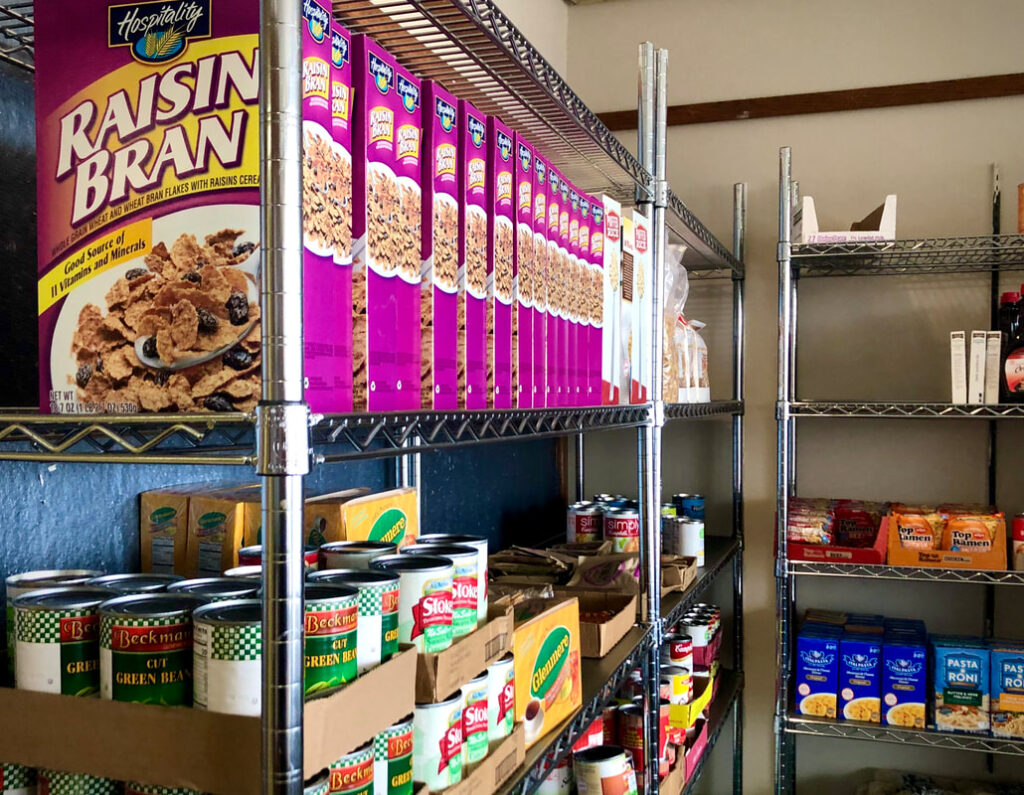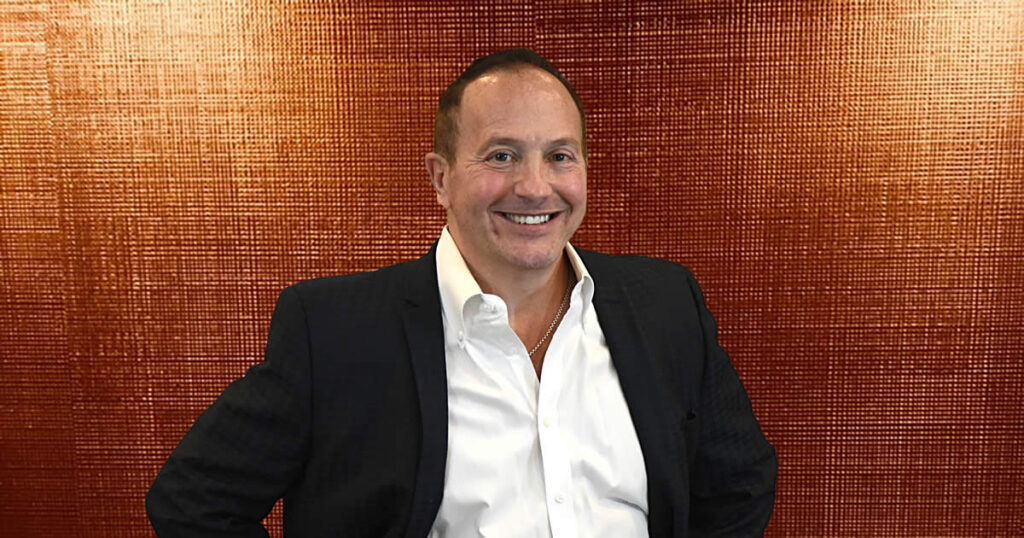Edited and Packaged by Jared Castañeda

“In a country that produces so much, no one should ever be hungry. But they are.”
Diana Smith, Founder of the SUNY New Paltz Food Pantry
The Hungry Hudson Valley: SUNY New Paltz Food Pantry
Pastor Dianna Smith had only established the food pantry at SUNY New Paltz about a year prior when she received an eye-opening visit. At the time, pantry space was limited; the operation was still small. Only a couple of shelves served as storage. Dried and canned goods occupied Smith’s desk.
A poised female student walked into the room during food pick-up hours. Upon noticing a box of cereal on the desk, she gazed at Smith and said, “I’ve been dreaming of cereal,” then broke down.
“That sealed for me the work that needed to be done here,” Smith said.
The campus chaplain formed the pantry in 2012 after a student approached her for help. The student explained she had been purchasing food for a friend experiencing hunger. She felt overwhelmed by the financial responsibility of feeding another mouth and sought Smith’s support. “I thought if there’s one, there’s more,” Smith says. An idea sparked in her head to address the issue.
Smith purchased mac ‘n cheese and canned food to start, transforming her small, shared office space into a makeshift pantry, opened just two hours weekly. Within the first week, 12 students came for food. Smith quickly realized the depth of students’ hunger issues. “Those who are trying so hard to do the right thing should not have to worry about where the next meal is coming from,” she says.
The SUNY New Paltz food pantry has since served thousands of students and staff in need. Food scarcity is becoming increasingly prevalent on campus. Last year, the pantry collected 3,995 pounds of food from the food bank, supplying enough for 700 visits from visitors, some new, some repeats. As of late February, the pantry has already gone through 1,900 pounds of food. Each month, it receives 100 to 120 visits. Smith expects an increase to 1,000 total visits this year.
Going into her 11th year as the founding director of the food pantry, Smith admits hunger issues are not getting better, but worse. “In a country that produces so much, no one should ever be hungry. But they are,” she says.
The Supplemental Nutrition Assistance Program, SNAP for short, is a welfare program that issues electronic benefits that food insecure people can use to purchase food. Households are eligible for SNAP if they meet three criteria: gross monthly income is approximately at or below 130 percent of the poverty line, net income is at or below the poverty line, and assets fall below a certain number.
The USDA estimates over 11 million children live in food-insecure homes. Millions of Americans are struggling to find their next meal. In 2018, 23 percent of New York State youth ages, birth to 17 years, received Supplemental Nutrition Assistance Program (SNAP) benefits. The Hudson Valley is no exception. The Food Bank of the Hudson Valley distributes 30 tons of food daily across Dutchess, Orange, Putnam, Rockland, Sullivan, and Ulster counties to local organizations, like the SUNY New Paltz food pantry.
In 2018, Gov. Cuomo announced the “No Student Goes Hungry” program, which mandated all SUNY schools to have “food pantry or stigma-free food access” for students. In 2019, visits to SUNY Campus/Campus-Partnered Food Pantries in the Mid-Hudson region exceeded 43,500.
Though access to food continues to pose an issue for college students, Smith remains hopeful that a community effort and intervention will eventually reduce the number of those in need. In looking towards the future, she says, “I hope that there’s enough food on this campus that I’m put out of business.” For as long as her pantry provides for students, however, she encourages anybody in need of resources to visit and feel no shame in asking for help. “Talk to others who have used the pantry. Come in when we’re open and see for yourself,” she says. “Know that we’re here to serve–not to judge, not to stigmatize, just to serve.”
The Pandemic’s Impact
More recently, the coronavirus pandemic has shifted the dynamic of how food resources provide to those in need.
The SUNY New Paltz food pantry conducts service through a remote online ordering system. Smith and one other member take turns filling bags with food, then leave them in a secure location on campus for students to pick up.
Since the pandemic began, Smith has seen a massive drop in students who come to the pantry, as expected. The system has been in place for three weeks and has served 26 students. She looks to continue serving students for as long as possible until the pantry runs out of food.
Meanwhile, People’s Place, a not-for-profit food pantry, community cafe, and thrift store located in Kingston, NY, has experienced an influx amid the crisis, particularly families facing food insecurity. The pantry has quickly shifted operations to accommodate the jump in visitors. “It’s a huge stress on our services. Our numbers have increased by 100 percent. We’ve doubled what we normally do,” says Christine Hein, executive director of People’s Place.
Hein’s organization offers a program called Bag Summer Hunger, which provides food to families of school-aged children when school is out for the summer. Now, she transformed the program into Bag Student Hunger, which serves the same purpose but provides for students forced home from school due to the pandemic.
The your-choice pantry currently offers premade bags packed by volunteers, who allot certain amounts of grains, proteins, and produce for balanced meals. Other local organizations collaborate with People’s Place to provide food donations and deliver food. People in need can call either the COVID or Family of Woodstock hotline for groceries. Hein and her team pack the groceries into bags, then volunteers from other organizations in Kingston collect the bags and distribute them to homes.
Hein’s regular volunteers are typically over 65 and forced to stay home. Now, nearly all the volunteers are new and temporary, mainly composed of younger adults home from work. Hein expresses her amazement at the ability of her community to come together to support a common cause. “I think we live in the most phenomenal community in the United States. We live in an area where neighbors reach out and help other neighbors in need,” she says.
Hein is confident in her organization’s ability to provide during this time while explaining the huge need for help that existed prior to the pandemic, and how heightened it will become after regular operations resume. “Whether it’s in a time of crisis or a time of stability, if people have the ability, they should always reach out and try to help one another. We always need volunteers and donations, not just in this time of crisis,” she says.
If you want to learn more about hunger relief resources in Ulster County, check out the video below:
Interested in more FEATURE stories? Check out:
Nadine Cafaro addresses SUNY New Paltz’s disparities in resource distribution by the area of study.
Gillian Hamilton explores the benefits and stipulations that come alongside tiny home living through a Q&A with researcher Dr. Maria Saxon.
Jessica Barr dives into the dangers of cyber stalking and how to handle it.
Joseph Juste examines the measures taken by local food pantries and meal services to provide services while staying safe during a pandemic.
Max Freebern describes the story of two homeless women in Ulster County struggling to find housing during the pandemic.
Emma Cariello explores the niche appeal the A24 film studio brings to young moviegoers and what makes their works so iconic.
Ericka Francois sits down with John Wayne Gacy rape survivor and domestic and sexual abuse advocate Patrick Dati.
